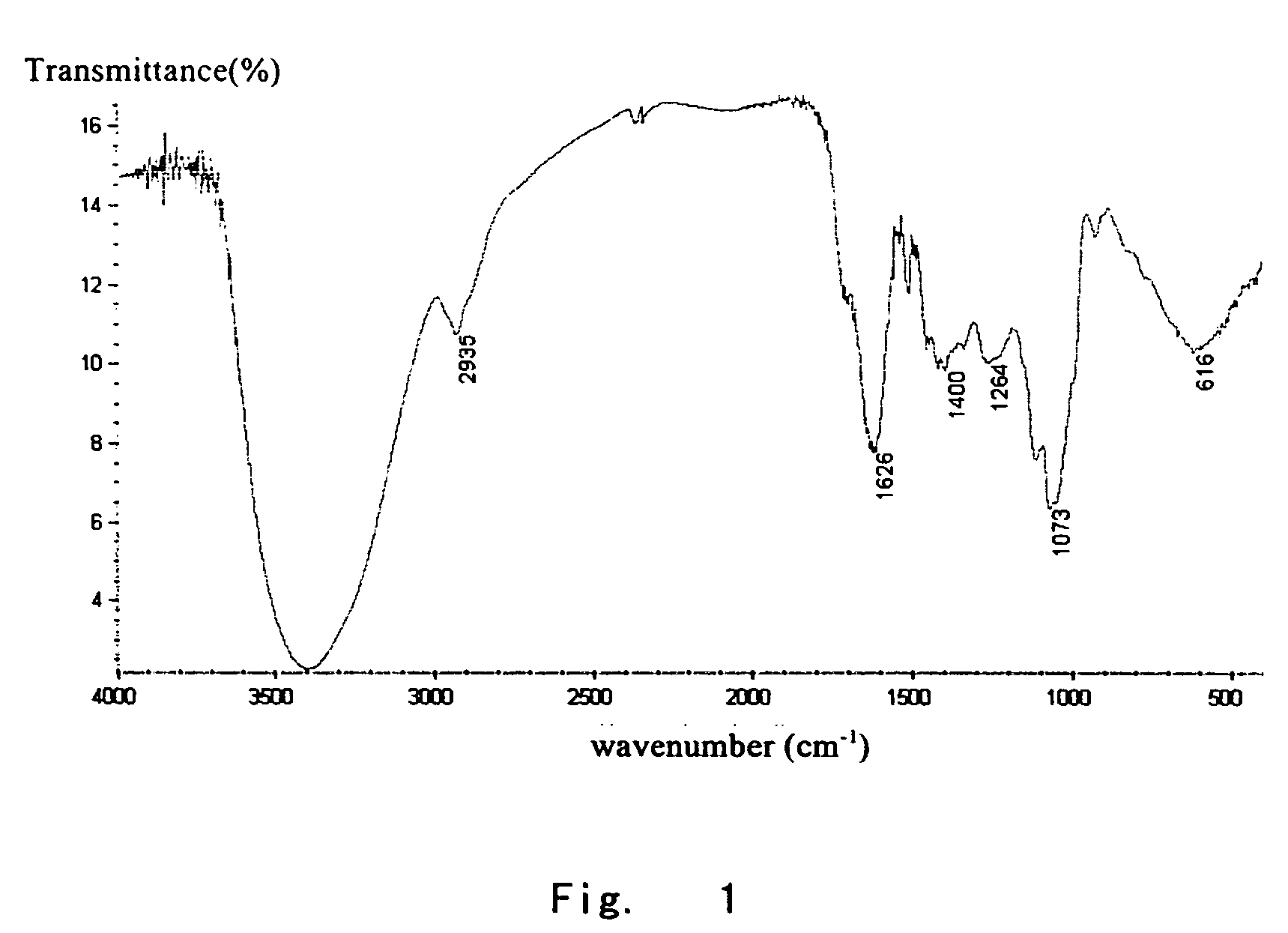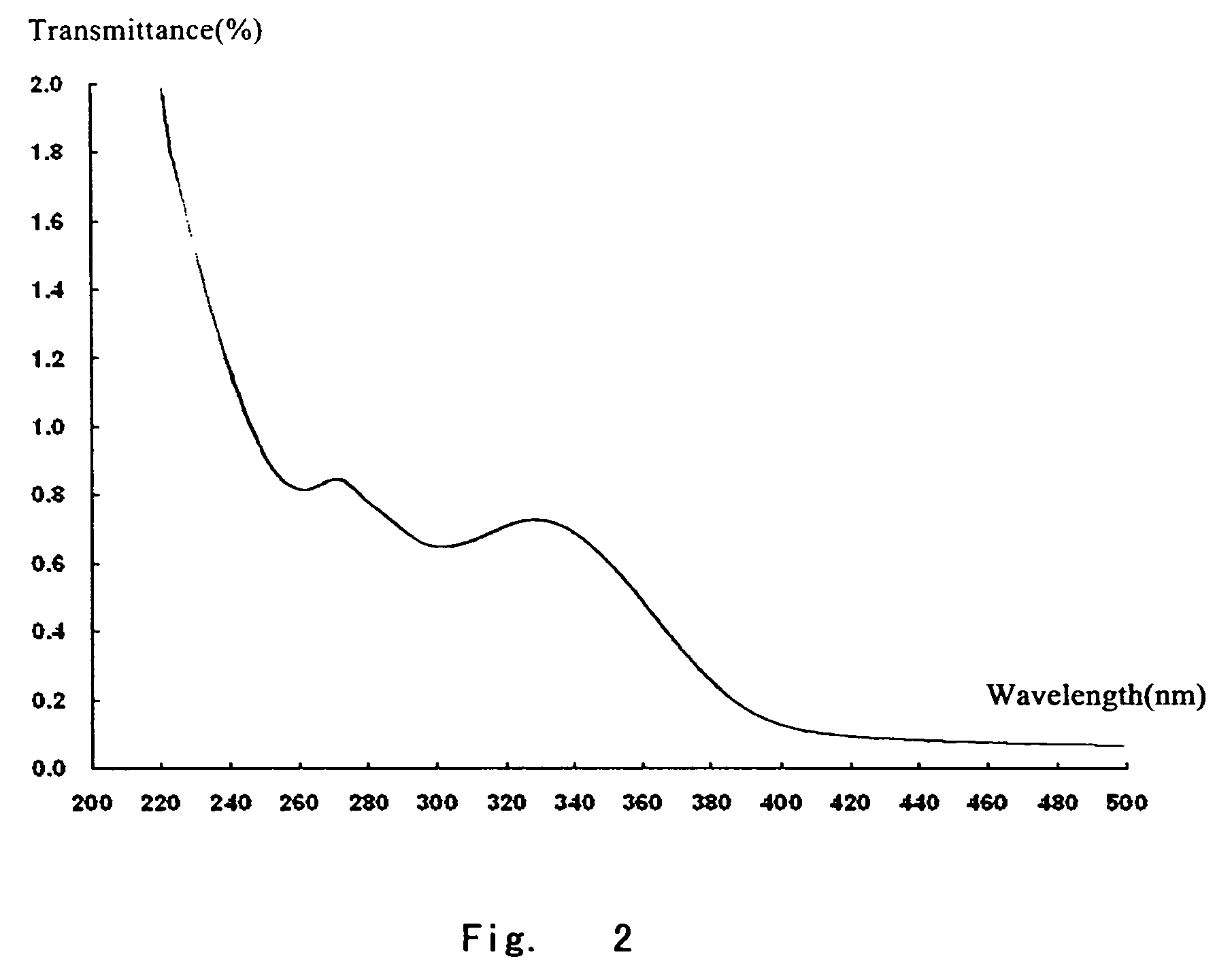Antioxidant of Bamboo Leaves and Its Uses
a technology of bamboo leaves and antioxidants, which is applied in the field of food additives, can solve the problems of limited use of antioxidants such as bha and bht, which are used much more, and have safety problems
- Summary
- Abstract
- Description
- Claims
- Application Information
AI Technical Summary
Benefits of technology
Problems solved by technology
Method used
Image
Examples
example 1
[0033]Application of AOB in Western Meat Products:
[0034]During stuffing and mixing of Western sausage, add AOB (calculated in % w / w on the basis of meat stuffing, previously dissolved in water) in appropriate proportion, tea polyphenol as control. Comprehensively evaluate the antioxidation of AOB in Western meat products by the modified thiobarbituric acid (TBA) method in combination with chromatic aberration determination, texture profile, and nitrite content measurement. Optimal products were obtained when adding 0.03% AOB and decreasing the use level of nitrite and iso-ascorbate sodium to half of the original formula. That is to say, AOB thus used, on the one hand, can effectively delay lipid oxidation, inhibit formation of MDA and increase shelf life; on the other hand, it can significantly decrease the nitrite in finished products, and increase edible safety; meanwhile, it has not any adverse effects on flavor, color, and texture of sausage. In Western sausage, AOB has a strong...
example 2
[0035]Application of AOB in Chinese Sausage:
[0036]Add AOB when mixing the meat stuffing (calculated in % w / w on the basis of meat stuffing, previously dissolved in water or alcohol). The experiment showed that: after adding 0.03% AOB on the basis of the original formula, the results of POV (peroxidation value) and AV (acid value) showed that the antioxidation of sausage were extremely increased; the nitrite content in finished products was only 56% of that in the control; when used in 0.03%, it had stronger effects than being used in 0.06%; when used in this amount (0.03%), it can significantly increase antioxidation of finished products, effectively clear away nitrites, and further block the formation of N-nitrosamine. Meanwhile, it does not have any adverse effects on the flavour, color and texture of the products and thus can be readily accepted by consumers.
example 3
[0037]Application of AOB in Preserved Ham:
[0038]AOB was dissolved in water to produce a 0.03% solution, TBHQ (previously dissolved in ethanol) in the same concentration as control. A slice of Jinhua ham with a thickness of 1 cm was soaked for 2 min, and the effects of AOB on antioxidation and sensory quality of the slice of Jinhua ham were compared. AOB can mask flavor of fresh preserved ham to some extent; however, there were no differences in flavor and taste when the preserved ham was cooked; chromatic aberration determination showed that, there were no significant effects on color of ham (p>0.10); after stored in an incubation at 50±1° C. for 11 days, AV and POV measurements showed that, in the AOB and the TBHQ experimental groups compared with the control group, lipid oxidation was significantly inhibited and the shelf life was significantly prolonged. AOB had slightly stronger effects than TBHQ.
PUM
| Property | Measurement | Unit |
|---|---|---|
| Fraction | aaaaa | aaaaa |
| Fraction | aaaaa | aaaaa |
| Fraction | aaaaa | aaaaa |
Abstract
Description
Claims
Application Information
 Login to View More
Login to View More - R&D
- Intellectual Property
- Life Sciences
- Materials
- Tech Scout
- Unparalleled Data Quality
- Higher Quality Content
- 60% Fewer Hallucinations
Browse by: Latest US Patents, China's latest patents, Technical Efficacy Thesaurus, Application Domain, Technology Topic, Popular Technical Reports.
© 2025 PatSnap. All rights reserved.Legal|Privacy policy|Modern Slavery Act Transparency Statement|Sitemap|About US| Contact US: help@patsnap.com



